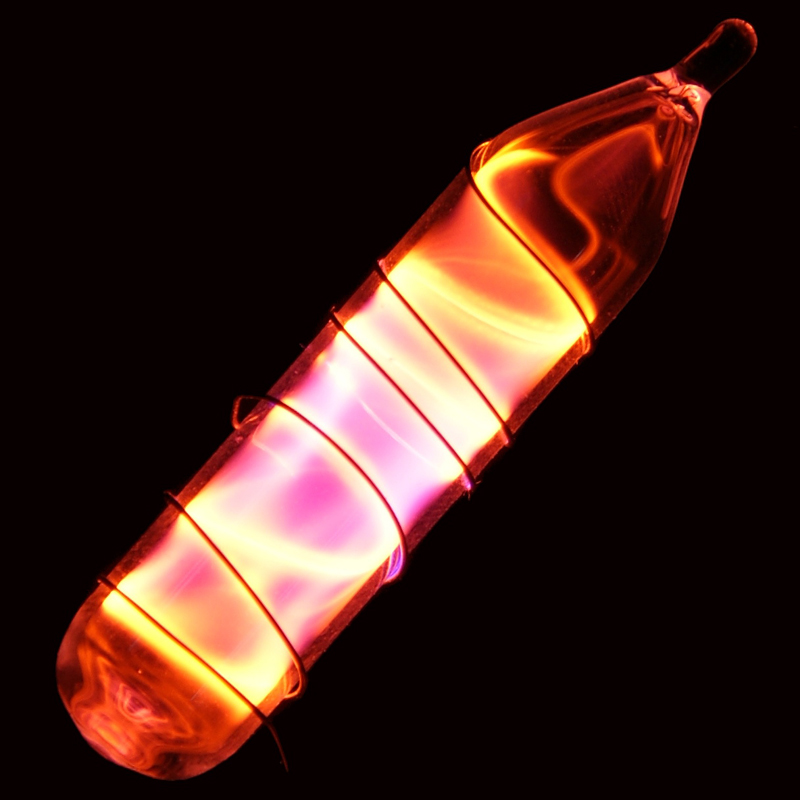Neon
10
Ne
Grup
18
Periyot
2
Blok
p
Protonlar
Elektronlar
Nötronlar
10
10
10
Temel Özellikleri
Atom numarası
10
Atom ağırlığı
20,1797
Kütle Numarası
20
Kategori
Soygaz
Renk
Renksiz
Radyoaktif
Hayir
From the Greek word neos, new
Kristal yapısı
Yüzey merkezli kübik
Tarihi
Neon was discovered in 1898 by the British chemists Sir William Ramsay and Morris W. Travers in London.
It was discovered when Ramsay chilled a sample of air until it became a liquid, then warmed the liquid and captured the gases as they boiled off.
After 1902, Georges Claude's company, Air Liquide, was producing industrial quantities of neon as a byproduct of his air liquefaction business.
It was discovered when Ramsay chilled a sample of air until it became a liquid, then warmed the liquid and captured the gases as they boiled off.
After 1902, Georges Claude's company, Air Liquide, was producing industrial quantities of neon as a byproduct of his air liquefaction business.
Enerji seviyesi başına Elektronlar
2, 8
Elektron dizilimi
[He] 2s2 2p6
In a vacuum discharge tube, neon glows reddish orange
Fiziksel Özellikleri
Faz
Gaz
Yoğunluk
0,0008999 g/cm3
Ergime noktası
24,56 K | -248,59 °C | -415,46 °F
Kaynama noktası
27,07 K | -246,08 °C | -410,94 °F
Ergime ısısı
0,34 kJ/mol
Buharlaşma ısısı
1,75 kJ/mol
Isı kapasitesi
1,03 J/g·K
Dünya kabuğundaki bulunulabilirliği
3×10-7%
Evrendeki bulunulabilirliği
0,13%

CAS Numarası
7440-01-9
PubChem CID Numarası
23935
Atom Özellikleri
Atom yarıçapı
38 pm
Kovalent yarıçapı
58 pm
Elektronegatifliği
-
İyonlaşma enerjisi
21,5645 eV
Atomik Hacim
16,7 cm3/mol
Isıl iletkenlik
0,000493 W/cm·K
Yükseltgenme seviyeleri
0
Uygulamalar
Neon is often used in brightly lit advertising signs.
It is also used in vacuum tubes, high-voltage indicators, lightning arrestors, wave meter tubes, television tubes, and helium-neon lasers.
Liquid neon is used as a cryogenic refrigerant.
It is also used in vacuum tubes, high-voltage indicators, lightning arrestors, wave meter tubes, television tubes, and helium-neon lasers.
Liquid neon is used as a cryogenic refrigerant.
Neon is not known to be toxic
İzotoplar
Kararlı izotoplar
20Ne, 21Ne, 22NeKararsız izotoplar
16Ne, 17Ne, 18Ne, 19Ne, 23Ne, 24Ne, 25Ne, 26Ne, 27Ne, 28Ne, 29Ne, 30Ne, 31Ne, 32Ne, 33Ne, 34Ne